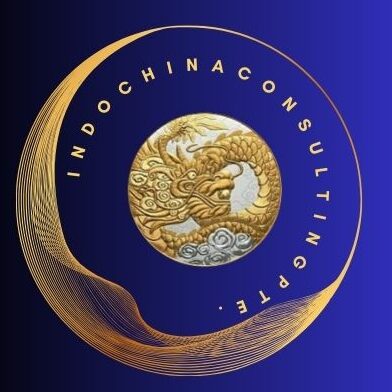What is my competitive edge and how do I research it in 2025? That’s a question I get asked by lots of startup founders. In today’s hyper-competitive business environment, startup founders need more than just a great idea; they need a clearly defined competitive edge. But how do you determine what truly sets your business apart? This comprehensive guide dives into actionable steps you can take to research and solidify your unique value proposition in 2025.
Why Knowing Your Competitive Edge Matters
Your competitive edge is the cornerstone of your startup’s success. It’s what makes customers choose your product or service over competitors and what convinces investors to back your vision. Venture capital and angel investors assess startups with a critical eye, prioritizing those that exhibit strong differentiation in their markets.
Without a clear understanding of your competitive edge, you risk blending into a sea of startups. Worse, you could waste time and resources chasing strategies that don’t align with your strengths.
How to Research, Identify and Answer: What Is My Competitive Edge?
Step 1: Analyze the Market Landscape
Understanding your market is the first step in identifying your competitive edge. Here’s how:
- Conduct Market Research: Use tools like Statista, CB Insights, and Crunchbase to gather data on industry trends and competitors.
- Perform a SWOT Analysis: Identify your startup’s strengths, weaknesses, opportunities, and threats.
- Leverage Customer Feedback: Analyze customer reviews, surveys, and interviews to uncover unmet needs and pain points.
Step 2: Study Your Competitors
To determine your edge, you need to understand who you’re up against.
- Identify Direct and Indirect Competitors: Use platforms like SimilarWeb to analyze competitor traffic and performance.
- Evaluate Competitor Offerings: Assess their products, pricing, marketing strategies, and customer service.
- Pinpoint Gaps: Look for areas where competitors fall short and consider how you can excel in those aspects.
Step 3: Leverage Data Analytics
Data is the backbone of identifying trends and customer preferences.
- Use Analytics Tools: Platforms like Google Analytics and HubSpot help track customer behavior and engagement.
- Measure KPIs: Focus on metrics like customer acquisition cost (CAC), lifetime value (LTV), and churn rate to identify areas for improvement.
- Conduct A/B Testing: Experiment with different strategies to see what resonates with your audience.
Step 4: Define Your Unique Value Proposition (UVP)
Your UVP should answer the question: “Why should customers choose my product over others?”
- Focus on Differentiators: Highlight what makes your product or service unique, whether it’s pricing, features, quality, or customer experience.
- Simplify Your Messaging: Ensure your UVP is clear, concise, and easy to understand.
- Validate with Customers: Test your UVP with a small audience to gauge effectiveness.
Step 5: Seek Feedback from Experts
Engaging with mentors and industry experts can provide valuable insights.
- Join Founder Communities: Platforms like Startup Grind and Indie Hackers connect you with experienced entrepreneurs.
- Tap into Investor Networks: Participate in pitch events and incubator programs to gain constructive feedback.
- Use Mentorship Platforms: Websites like MicroMentor and SCORE offer free mentorship opportunities.
What is My Competitive Edge: Factors Investors Consider Before Investing in You
Venture capitalists and angel investors prioritize the following factors when assessing startups:
Scalability
Investors look for businesses that can grow rapidly without proportional increases in costs.
Market Differentiation
A startup must clearly stand out from competitors, whether through technology, branding, or customer experience.
Strong Leadership Team
A capable and adaptable team often signals the ability to navigate challenges and execute a vision.
Traction
Demonstrating early customer adoption, strong sales metrics, or partnerships indicates market demand and feasibility.
Intellectual Property
Proprietary technology, patents, or trade secrets provide a competitive moat that others can’t easily replicate.
Customer Retention
Investors value startups with high customer retention rates, as this often signals satisfaction and loyalty.
What is My Competitive Edge: Actionable Tips to Strengthen Your Competitive Edge
- Invest in Innovation: Continuously improve your product or service to stay ahead of trends.
- Enhance Customer Experience: Focus on personalized interactions and outstanding support.
- Build a Strong Brand: Create a memorable brand identity that resonates with your target audience.
- Focus on Operational Excellence: Streamline processes to deliver better quality and efficiency.
- Stay Agile: Be prepared to adapt your strategies based on market feedback and data.
What is My Competitive Edge: Resources for Startup Founders
For further guidance, consider exploring these platforms:
- Y Combinator Startup Library: Offers free resources, including playbooks and guides.
- Techstars Toolkit: Provides templates and tools for startups.
- Jamesspurway.com: Access a wide range of free and paid products tailored for startup founders.
- Startup Nation: Features blogs, podcasts, and forums for founders.
FAQs
Q1: How do I determine if my competitive edge is strong enough?
A strong competitive edge should be clearly distinguishable, sustainable, and relevant to your target market. Validate it through customer feedback and performance metrics.
Q2: Can I have more than one competitive edge?
Yes, many startups excel in multiple areas such as innovation, customer service, and pricing. However, ensure each edge aligns with your core mission and capabilities.
Q3: What if I’m struggling to identify my competitive edge?
Consider seeking external feedback from mentors, customers, or industry experts. Tools like SWOT analysis and competitor benchmarking can also help uncover your strengths.
Q4: How often should I reassess my competitive edge?
Regular reassessment is crucial, especially when introducing new products, entering new markets, or facing significant competition. Aim for a review at least annually.
Key Takeaways
Understanding and leveraging your competitive edge is a continuous process that demands strategic research and constant refinement. By analyzing your market, studying competitors, and leveraging expert feedback, you can craft a UVP that resonates with both customers and investors. For more tools and resources, explore platforms like Jamesspurway.com and other communities dedicated to empowering startup founders. Embrace the challenge, and let 2025 be the year you solidify your startup’s position as a market leader.
